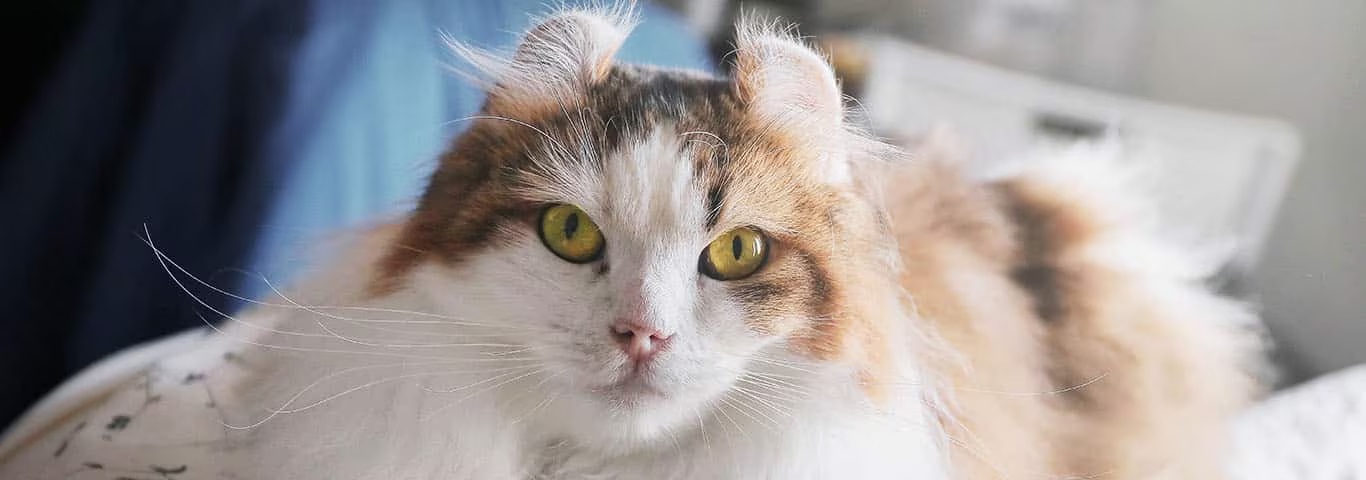The head of the American Curl is wedge shaped with eyes that are shaped like a walnut. Her tail is long. Her unique feature, of course, is that her ears curl backwards. Her ears are large, and curve in a smooth arc of at least 90 degrees. The natural fur in her ears is apparent. The tips of her ears should be flexible and can be handled without any complaints from her.
The coat texture of the American Curl is silky, whether she is a short hair or a long hair. The hair length on the long haired curl is really more semi-long than long. The American Curl is accepted in all colors and patterns.
The American Curl is a lively cat. She is very interested in people and gets along well with her parents.
The American Curl enjoys daily exercise. They relish cat trees in the house with perches for climbing and jumping. If they are provided with enough exercise space, they tend to maintain their weight rather well. They also like interactive play. While not considered a "lap cat," the Curl likes to be next to people.
In 1981 in California, a kitten was found by Joe and Grace Ruga. This kitten had the unique characteristic of having ears that curled backwards. The Rugas brought the kitten into the house, named her Shulamith, and she became the foundation of the American Curl breed. When Shulamith had her kittens, two of them also had the same curled ears. In addition, one of the kittens with the curled ears was a shorthaired cat instead of exhibiting the longer coat of Shulamith.
Shulamith and her remarkable kittens soon came to the attention of the cat fancy and the breed, called American Curl, began to attract people who were interested in breeding and exhibiting them. The breed became recognized for exhibition in the championship class at cat shows.
Adopt a pet. Change a life.
Are you prepared to adopt a pet? Use these tools to make sure you are ready for the commitment.
Adopt a pet. Change a life.
Are you prepared to adopt a pet? Use these tools to make sure you are ready for the commitment.






















